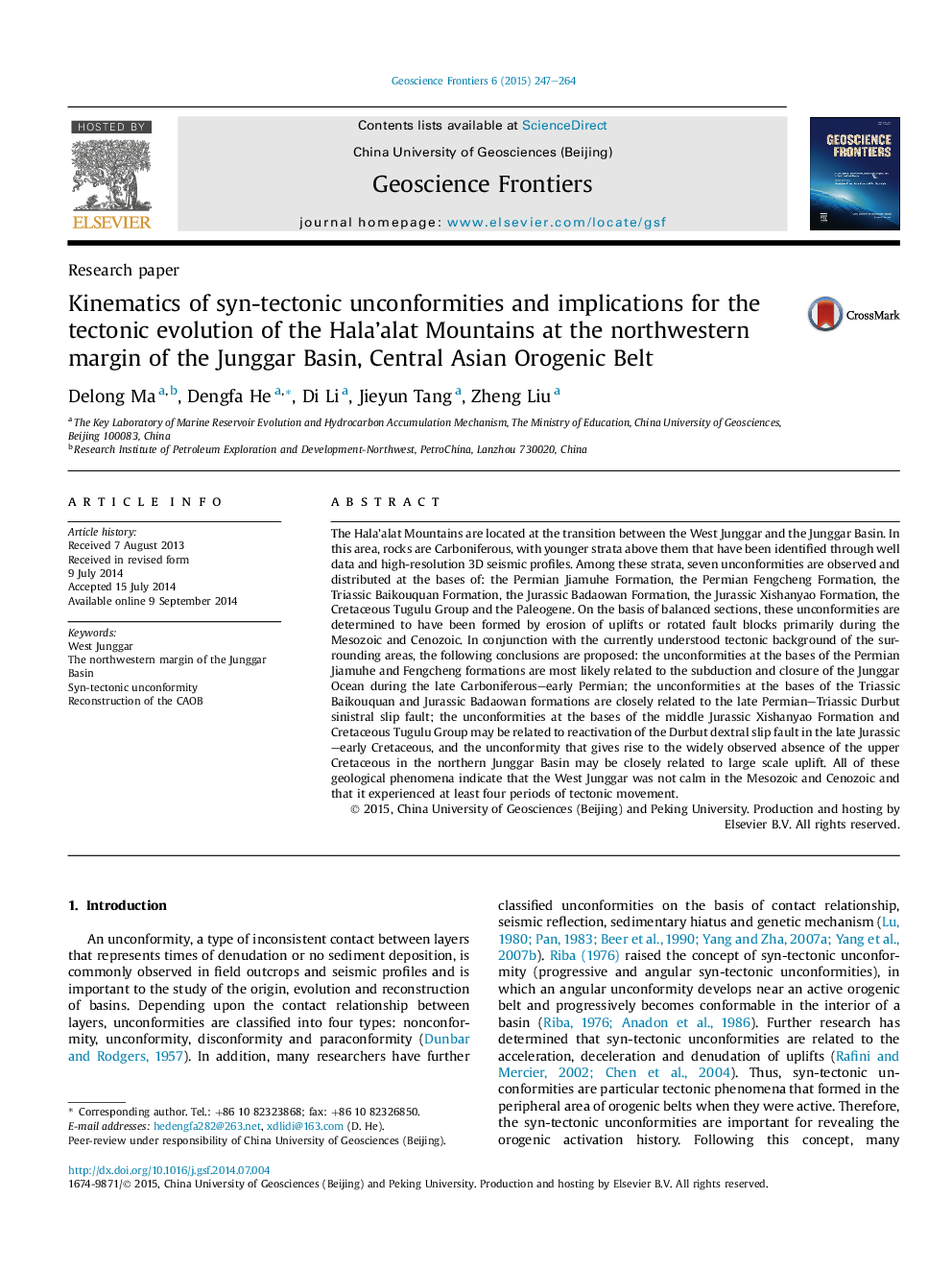| کد مقاله | کد نشریه | سال انتشار | مقاله انگلیسی | نسخه تمام متن |
|---|---|---|---|---|
| 4681634 | 1348863 | 2015 | 18 صفحه PDF | دانلود رایگان |

• We construct syn-tectonic unconformities above the Carboniferous in study area.
• We depict the characteristics of these syn-tectonic unconformities.
• These syn-tectonic unconformities are related to the reactivities of West Junggar.
The Hala'alat Mountains are located at the transition between the West Junggar and the Junggar Basin. In this area, rocks are Carboniferous, with younger strata above them that have been identified through well data and high-resolution 3D seismic profiles. Among these strata, seven unconformities are observed and distributed at the bases of: the Permian Jiamuhe Formation, the Permian Fengcheng Formation, the Triassic Baikouquan Formation, the Jurassic Badaowan Formation, the Jurassic Xishanyao Formation, the Cretaceous Tugulu Group and the Paleogene. On the basis of balanced sections, these unconformities are determined to have been formed by erosion of uplifts or rotated fault blocks primarily during the Mesozoic and Cenozoic. In conjunction with the currently understood tectonic background of the surrounding areas, the following conclusions are proposed: the unconformities at the bases of the Permian Jiamuhe and Fengcheng formations are most likely related to the subduction and closure of the Junggar Ocean during the late Carboniferous–early Permian; the unconformities at the bases of the Triassic Baikouquan and Jurassic Badaowan formations are closely related to the late Permian–Triassic Durbut sinistral slip fault; the unconformities at the bases of the middle Jurassic Xishanyao Formation and Cretaceous Tugulu Group may be related to reactivation of the Durbut dextral slip fault in the late Jurassic–early Cretaceous, and the unconformity that gives rise to the widely observed absence of the upper Cretaceous in the northern Junggar Basin may be closely related to large scale uplift. All of these geological phenomena indicate that the West Junggar was not calm in the Mesozoic and Cenozoic and that it experienced at least four periods of tectonic movement.
Figure optionsDownload as PowerPoint slide
Journal: Geoscience Frontiers - Volume 6, Issue 2, March 2015, Pages 247–264